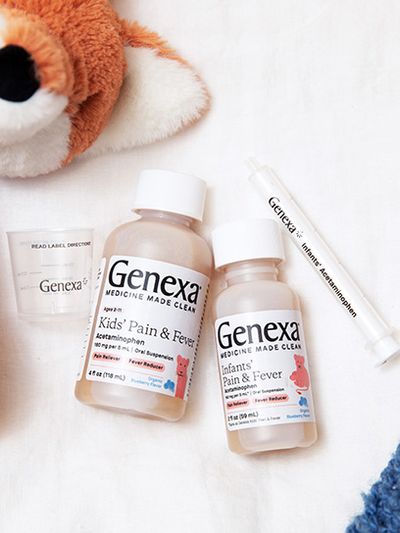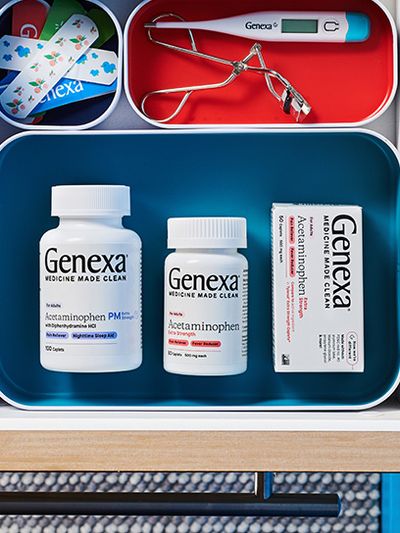How Often Should You Use Saline Nasal Spray?
Understanding Saline Nasal Spray Dosage
Table of contents:
Nasal congestion is a frustrating experience, and children especially struggle to manage symptoms when they are unable to efficiently blow their nose. Saline nasal spray provides a gentle, effective, natural treatment option for nasal congestion in adults and children, but how often should you or your child use saline nasal spray?
What are nasal sprays?
Nasal sprays are popular treatments for a variety of conditions that involve the nasal passages. There are three main types of nasal sprays, including saline nasal sprays, decongestant nasal sprays, and steroid nasal sprays, each of which has a slightly different intended purpose.
Saline Nasal Sprays
Saline nasal sprays are available over the counter and consist of a simple saltwater solution. No prescription is required for saline nasal sprays, which can be purchased at most pharmacies and big box stores and can also be made at home.
Saline nasal sprays do not contain any medication, so they can be used as often as needed in order to improve the symptoms of nasal congestion. Although saline nasal sprays do not contain medication, they help to loosen up any thick mucus in your nasal passages and provide moisture to prevent dryness from forming, which can be painful.
The primary function of saline nasal sprays is to provide moisture for the nasal passages. Children who cannot blow their nose may be able to use saline nasal sprays to safely clear their nostrils and reduce congestion.
Decongestant Nasal Sprays
Decongestant nasal sprays are also available over the counter in many cases, but some are available only by prescription from a doctor. Decongestant nasal sprays work by a different mechanism than saline nasal sprays, as they cause the blood vessels to narrow inside the lining of the nose. As a result, swollen tissues in the nasal passages shrink, reducing inflammation. Decongestant nasal sprays should not be used for more than three days, as they can cause the symptoms of a cold, allergies, or other illnesses to get worse. If you use decongestant nasal sprays for three days and do not see an improvement in your symptoms, call your doctor.
Most decongestant nasal sprays should not be used on toddlers, and for children aged 6 through 12, should be used with adult supervision and under the direction of their pediatrician.
Steroid Nasal Sprays
Some steroid nasal sprays can be purchased over the counter, while others require a prescription. Like other steroids, steroid nasal sprays work by reducing inflammation in the nasal passages. When the nasal passages become inflamed, they can cause congestion, a runny nose, sniffling, and sneezing. Steroid nasal sprays are most typically used to relieve allergy symptoms, but they can also be used to treat the symptoms of a sinus infection.
There have been some prescription steroid nasal sprays approved for children as young as 2, but you should consult your pediatrician about dosing for each steroid nasal spray you consider.
What is saline nasal spray used to treat?
Saline nasal spray is used for the treatment of a number of different conditions. While saline nasal spray doesn’t address the root cause of your symptoms, such as an underlying illness or allergy, it does provide relief from some of the symptoms associated with these conditions.
Saline nasal spray is primarily used for the following purposes:
- Relief of nasal congestion and dryness
- Relief of symptoms associated with upper respiratory infections like colds or sinusitis
- Pretreatment for nasal steroid administration
- Relief of symptoms associated with hay fever
- Pretreatment before using medicated nasal sprays for allergies
- Relief of symptoms associated with respiratory allergies
- Pretreatment before using an inhaler medication
- To provide moisture in dried or crusty nasal passages following nasal surgery
- To prevent dryness caused by breathing in cold, dry air
How are saline nasal sprays used?
If you’ve never used a saline nasal spray before, the thought of intentionally spraying something up your nostrils can be strange. However, saline nasal sprays are among the mostgentle nasal sprays on the market.
To use a saline nasal spray, follow these steps:
- If possible, blow your nose to try and empty your nasal passages as much as possible (children may not be able to do so).
- Check the label of the nasal spray for directions on how to prime the spray, such as pumping a nozzle or squeezing the bottle. Unscrew the cap.
- Using one finger, block one nostril by gently closing the nostril from the outside and applying light pressure.
- Position the spray bottle underneath your open nostril and place your thumb on the bottom of the spray bottle.
- Squeeze the bottle and gently breathe in. Repeat if instructed by the product directions. Switch to the other side and repeat.
- After using the saline nasal spray, resist blowing your nose and try not to sneeze. This will keep the solution inside your nostrils and allow it to start working.
Are there any side effects associated with saline nasal spray?
Saline nasal spray is not a medication, so it is usually not associated with any side effects. However, some side effects may rarely occur. The vast majority of these side effects subside quickly.
Side effects associated with saline nasal spray include:
- Sneezing
- Eye irritation if the produce gets into the eye
- Abnormal or salty taste in the mouth
- Cough
- Nose irritation
How often should you or your child use nasal spray?
Saline nasal spray does not contain any medication, so it can be used by you or your child on an as needed basis. Unlike some nasal sprays, including nasal decongestants and other medicated sprays, saline nasal spray is not associated with a “rebound” effect that causes congestion to become worse when used several days in a row.
While these medications typically work faster to relieve congestion than saline nasal spray, they cannot be used as often and could make your symptoms worse.
By contrast, when used to relieve congestion and dryness in the nasal passages, you or your child can use saline nasal spray at a rate of two sprays per nostril as needed. When saline nasal spray is used as a pretreatment before using nasal steroids, the spray should be used in a dose of one spray per nostril two to six times per day.
What should I do if a saline nasal spray doesn’t relieve my congestion?
Saline nasal spray can be very effective at reducing uncomfortable congestion associated with various illnesses and allergies, but there may be situations in which saline nasal spray alone cannot relieve your symptoms. In these situations, patients may benefit from using a decongestant or antihistamine to help control their symptoms.
What are the differences between decongestants and antihistamines?
Decongestant nasal sprays are most commonly used to treat nasal or sinus congestion, while antihistamines are often used for the treatment of allergies and can also reduce drainage associated with a runny nose, postnasal drip, or watery, itchy eyes.
Decongestant nasal sprays work by reducing the amount of swelling in the nasal passages. As a result, patients feel less nasal pressure and are able to breathe more easily due to the improved airflow. Decongestants are available in the form of both nasal sprays and pills, but the nasal sprays should not be used for more than three days at a time. Otherwise, you may experience rebound effects and end up more congested than when you started.
While decongestants are generally considered safe, there are a few side effects that you should be aware of:
- Decongestants are most commonly taken during the daytime because they have the potential to cause insomnia. Decongestant nasal sprays, however, usually do not cause this side effect as severely, and many can be taken at night to relieve congestion.
- Patients with heart problems or high blood pressure may not be able to safely use decongestants, as they can cause your blood pressure to increase. Make sure to talk to your doctor before using a decongestant if you have pre-existing heart conditions or high blood pressure.
Antihistamines are commonly used for the treatment of allergies, but they may also be useful when you have a cold. Antihistamines are a type of medication that blocks the action of a chemical produced by the body called histamine, which is typically produced in response to the presence of an allergen.
Histamine causes the tissues inside the nasal passages to swell and itch, causing you to start sneezing and developing a runny nose. While histamine typically is not considered responsible for causing a runny nose and sneezing if you’re sick with a virus or illness like the common cold, use of antihistamine nasal sprays or pills may help reduce congestion nonetheless.
Antihistamines are commonly used and can be purchased over the counter or with a prescription, but they are associated with a few side effects, including:
- Drowsiness
- Dry mouth
- Headache
- Dizziness
Due to the potential for antihistamines to cause significant drowsiness, these medications are best taken at night.
Summary
Saline nasal sprays do not contain medication and can be used by you or your child as often as needed to experience relief from symptoms associated with nasal congestion.
If you find that your symptoms persist for an extended period of time or become worse, you may need to speak to your doctor about using a different type of nasal spray or other treatment option that can better address the root cause of your symptoms.






